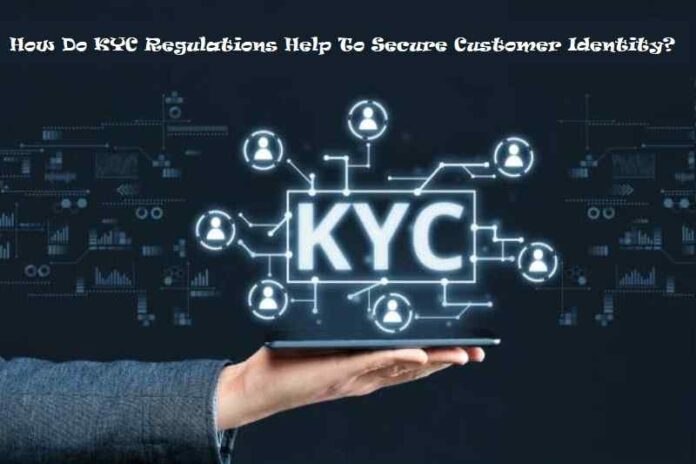Today’s world is impacted heavily due to the increase in the crime rate. People across the globe are not safe as criminals find multiple ways to exploit businesses. According to the statistics, 847,376 complaints were lodged to the cybercrime authorities in 2021, which is 7% higher than the previous year. Most financial authorities take measures to prevent crimes. To comply with the KYC regulations, all the institutions are implementing identity verification solutions. Even online platforms are adopting KYC checks for maintaining the stability of digital systems. The KYC checklist ensures that the client and their network can help in preventing crimes.
What Is KYC?
Known as Know Your Customer, the KYC check is a process that is carried out by most organizations to verify the identity of their customer. As the name suggests, knowing the customer helps the organization to onboard verified clients that contribute to the cause of fighting crimes. KYC, evaluate the customer completely with multiple checks and operations.
KYC Process
The process of identity verification performs at multiple levels. It evaluates customer identity. It makes sure that the person does not involve in any sort of fraudulent activity. Most users have experienced the KYC checks at the bank account opening phase. The initial KYC identity verification check is now a major part of the customer onboarding process.
Identity Verification With Documents
Multiple phases of checks evaluate the customer. Document verification is one of the initial steps in the verification cycle. The organizations use customers’ legal documentation to verify their identity. During the onboarding phase, the client needs to provide all the identity documents. These include the customer’s identity card, driving license, passport, and other papers that provide the identity information of the client. The banks and financial institutions also gather drafts and previous financial statements to evaluate the client’s financial status. The documents analyze and process to verify the identity of the client. The name, appearance, and age of the customer need to confirm in these documents.
Biometric Verification Of Customer
The addition of biometrics greatly improved the process of identity verification. The new systems are all developed based on the biometric evaluation of clients. The use of these solutions also helps in eradicating the chances of unauthorized access in simple words, it prevents attackers. As biometrics are unique characteristics the fraudsters fail to replicate these metrics. With the use of a biometric solution, the client is verified with face recognition technology in real-time. The client’s face acts as the subject for the verification and evaluates the person based on their unique characteristics.
Address Verification
The KYC checklist also includes address verification of the customer to enhance the levels of security. The client needs to present proof of their address in terms of a secondary document. So most organizations use utility bills to verify the address of the user. The address verification adds to the level of trust in the client. The new technologies have enabled organizations to process the live location of a customer. Moreover, they use global positioning systems in terms of new mapping engines to locate the client in real-time.
Multi-Step Authentication
New initiatives take to reduce crimes and thefts. The process of two-factor authentication applies to the KYC checklist to enhance the security of the customer. The method of two-factor authentication authenticates the client by setting up multiple checks when the client opts to log in. The system-generated pin is required to proceed, which is sent to the client’s verified email address. This step is a part of a digital KYC solution and improves the process of the customer’s ongoing identification cycle.
KYC and Cryptocurrency
Cryptocurrency gets lauded for being decentralised and a form of exchange that encourages anonymity; nevertheless, these advantages also pose obstacles in the fight against money laundering. As a result, regulating organisations are exploring ways to implement KYC on cryptocurrency marketplaces, requiring cryptocurrency platforms, like financial institutions, to authenticate their customers. Also, many sites implement KYC practices, even if it does not require.
Crypto-to-crypto and fiat-to-crypto exchanges are the two types of exchanges. Moreover, crypto-to-crypto exchanges do not trade in traditional currency, they are not under the same pressure to implement KYC rules as exchanges that do.
Fiat to crypto exchanges makes it easier to convert fiat money to cryptocurrency. Because fiat currency is a country’s official currency, most of these trades use some form of KYC. So, fortunately, financial institutions should have already conducted KYC checks on their consumers.
FinCEN suggested in early 2021 that bitcoin and digital asset market players submit, retain, and verify the identities of their customers. So, certain cryptocurrencies would be classified as monetary instruments under this plan, making them subject to KYC procedures.
Transactions monitoring
The financial institution examines the customer’s/transactions, and clients and any transaction that is unusual/high-valued, frequent, or otherwise unusual is detected automatically and subjected to manual scrutiny.
Furthermore, the individual/body is deemed KYC validated once all of the preceding stages have been completed. A verification certificate may include, however, it doesn’t always the case. So, the user may find the process simple, but the financial institution’s verification process requires commitment and care. Companies, investors, banks, and others use the KYC procedure as part of their due diligence checks.
Conclusion
KYC Compliance calls as necessary for all the businesses out there. It plays an important role in regulating anti-theft laws that prevent illicit activities within the systems. Moreover, with the KYC regulations, the customer is verified completely by multiple assessments. Document verification and biometric face recognition is a part of KYC check. These steps evaluate the client by their legal documentation and identifiable characteristics. Biometric face recognition restricts the attackers to get access to the system. So, the two-factor authentication method is also a part of an effective KYC cycle. It verifies the user at every session of logging into the system with a unique security key.

